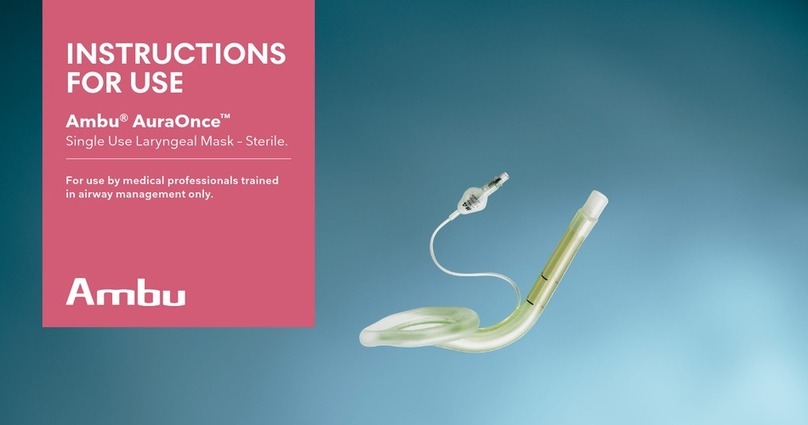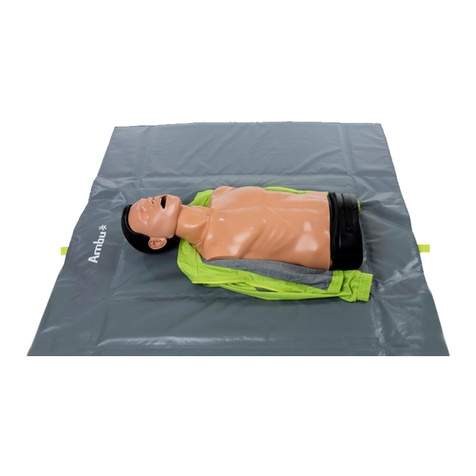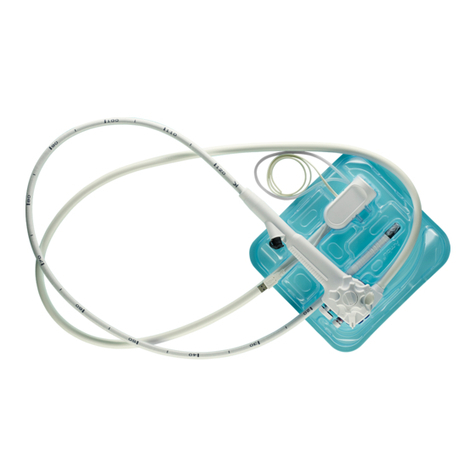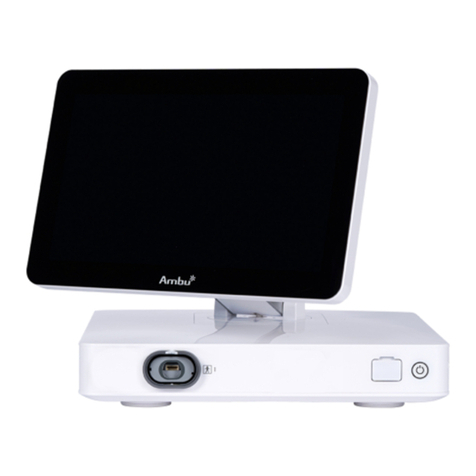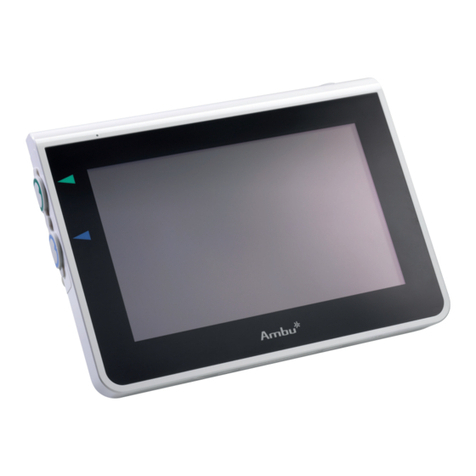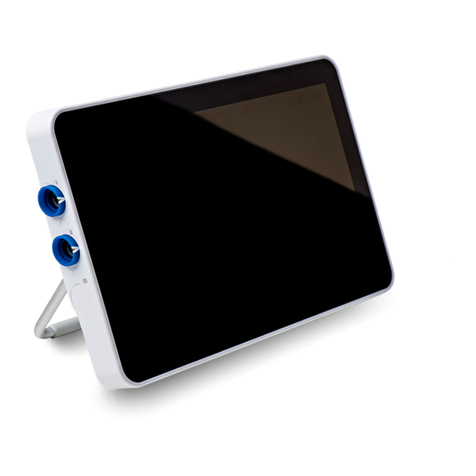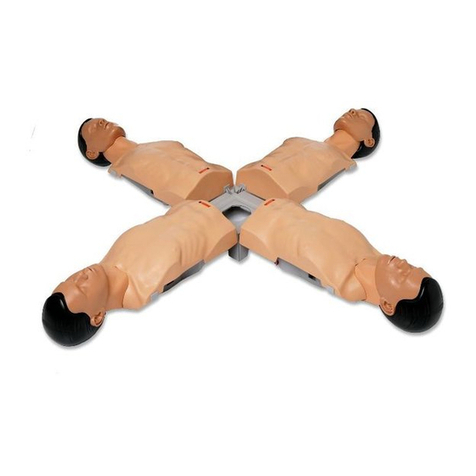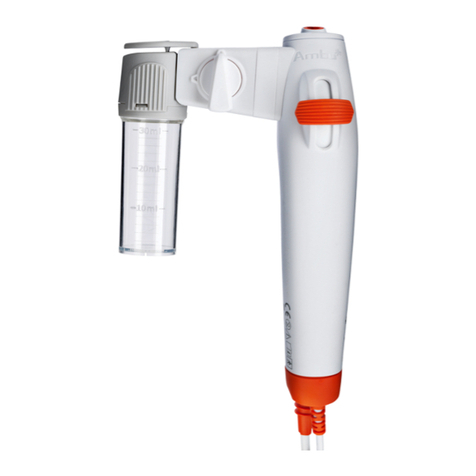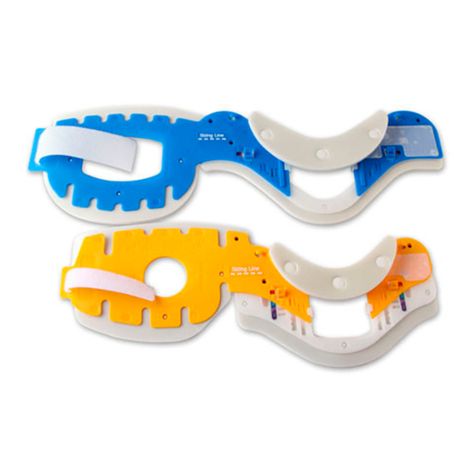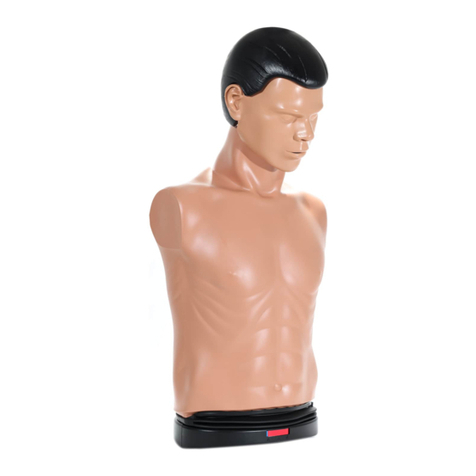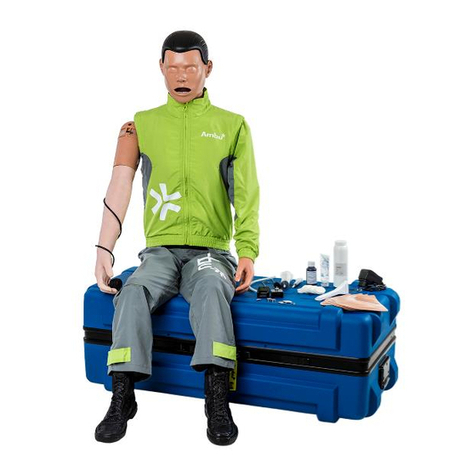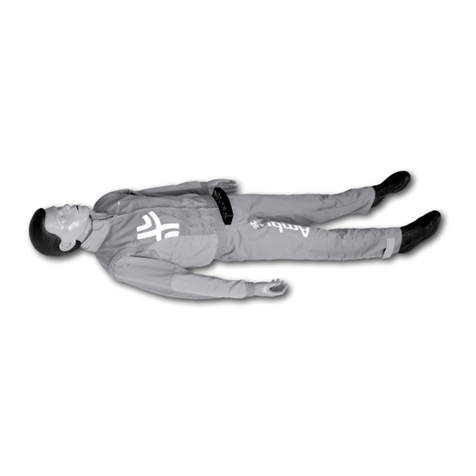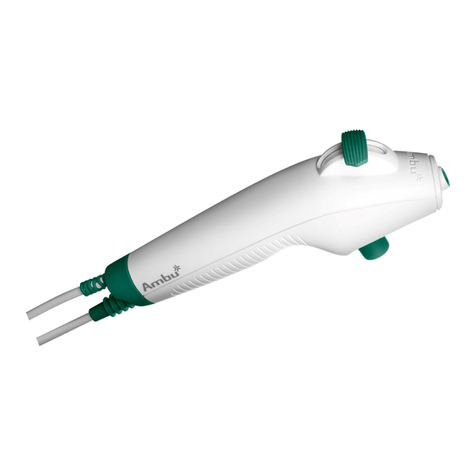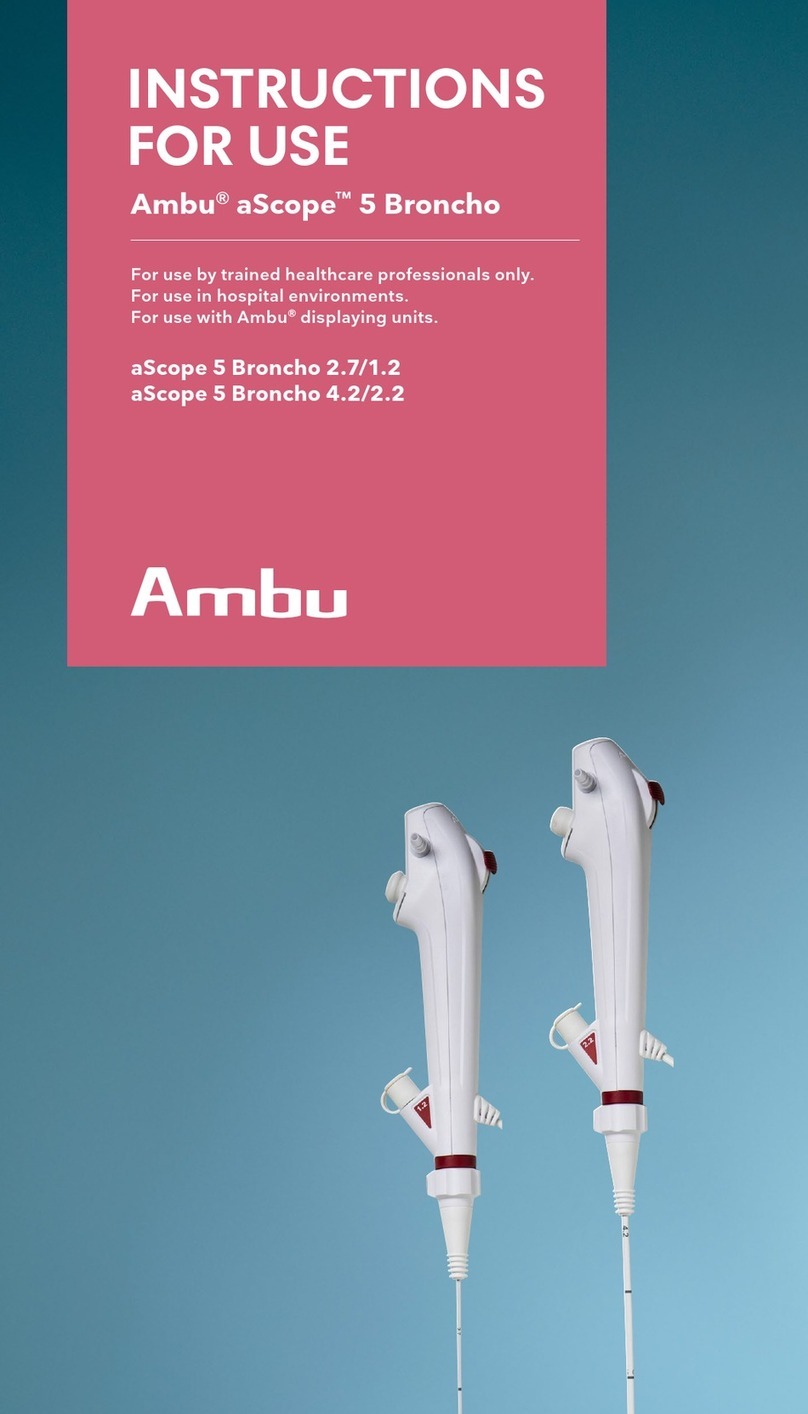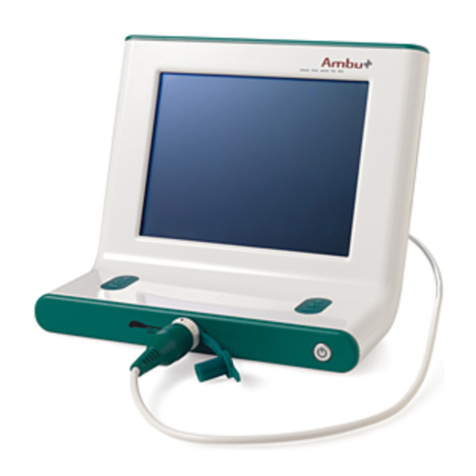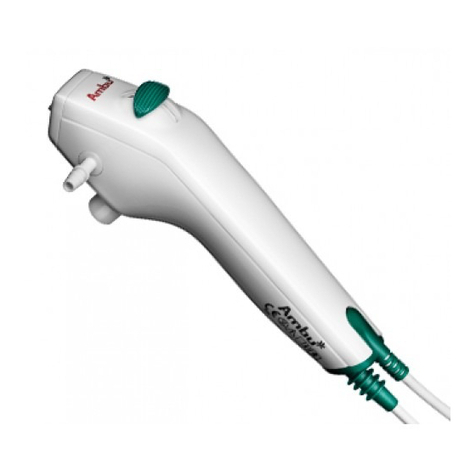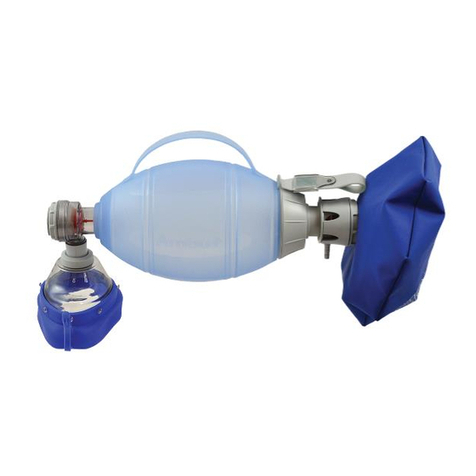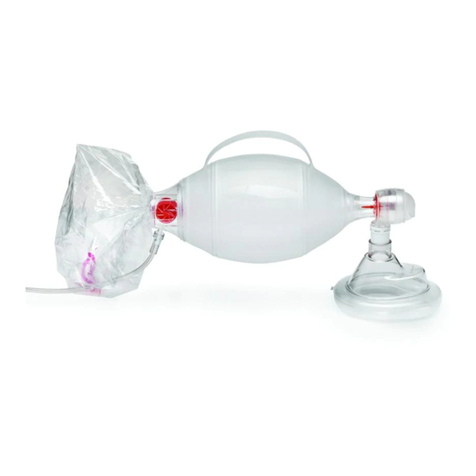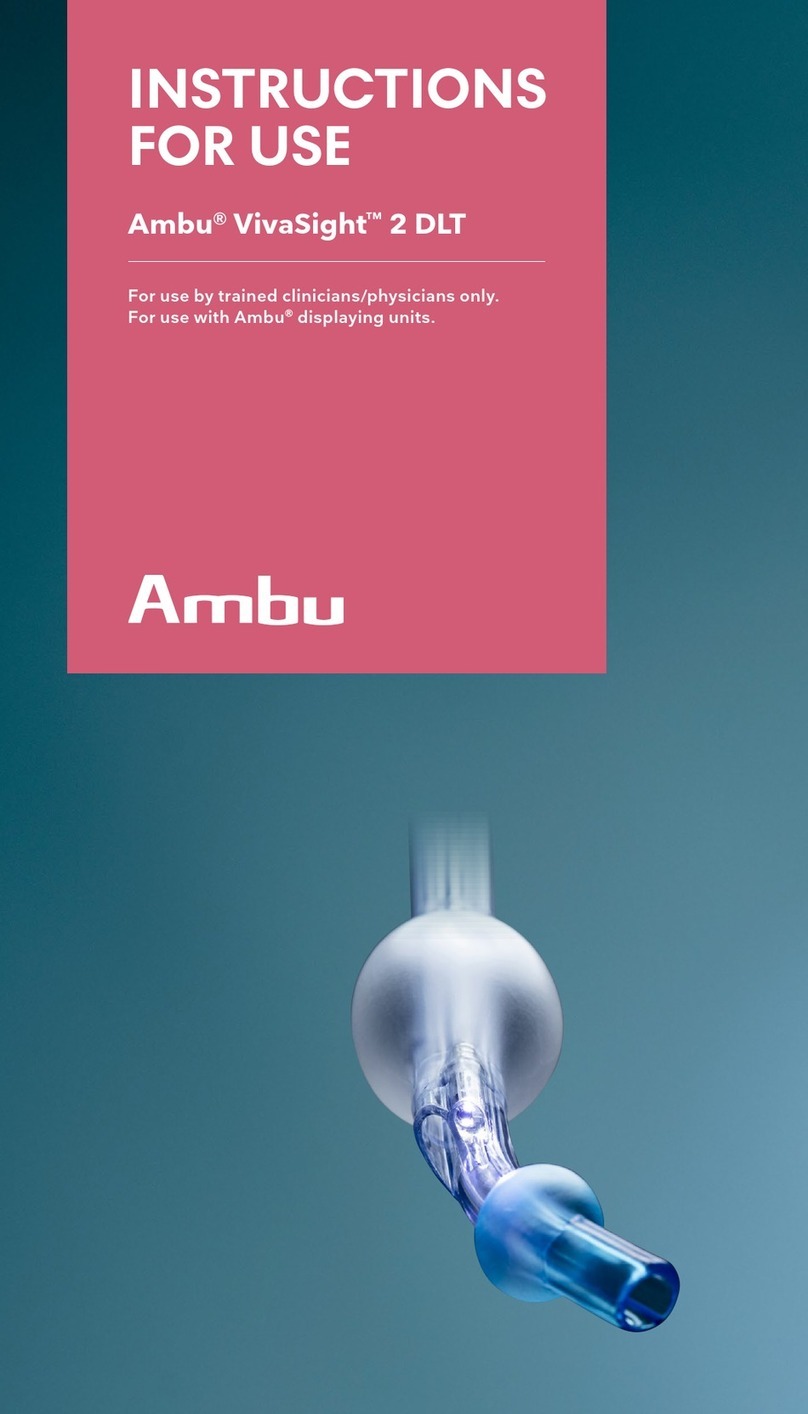10
EN
Never over-inflate the cuff. Avoid prolonged intracuff pressures greater than 60 cm H2O. The initial cuff
pressure varies according to patient, mask size, head position, and depth of anaesthesia.
Do not hold the tube during inflation as this prevents the mask from seating itself correctly. A small outward
movement of the tube may be seen as the mask is inflated.
To avoid over inflation, it is very important to strictly adhere to the cuff-inflation volumes stated in Table 3.
Over-inflation can be entirely avoided by completely deflating the cuff prior to insertion by withdrawing all of the
air with a suitable syringe. This is the method recommended by Ambu.
In instances where an alternative technique is adopted, for example, if the cuff is inserted in a neutral or
semi-inflated state, there is a risk that the cuff may be over-inflated. Once the mask is inserted extra care must
be taken to compensate for the air already in the mask when subsequently inflating the cuff. The maximum extra
volume depends on mask size and initial volume of air in the mask when inserted.
WARNING
Never overinflate the cuff after insertion.
Look for the following signs of correct placement: The possible slight outward movement of the tube upon cuff
inflation, the presence of a smooth oval swelling in the neck around the thyroid and cricoid area, or no cuff visible
in the oral cavity.
7.6. Connecting to the Anaesthetic System
Carefully connect the Ambu AuraOnce to the anaesthetic circuit or ventilation bag and initiate gentle manual
ventilation, looking for any signs of leakage. Auscultation over the lungs and epigastrium and capnography should
be used to determine sufficient respiration. Auscultate in the anterolateral neck region to check for abnormal
sounds that might indicate mild laryngeal spasm or light anaesthesia.
The mask may leak slightly for the first three or four breaths before settling into position in the pharynx. In case
leakage persists, check that there is adequate depth of anaesthesia and that the pulmonary inflation pressures are
low before assuming that reinsertion of the Ambu AuraOnce is necessary.
As with other methods of airway management, use of pulse oximetry and capnography is recommended when
using the Ambu AuraOnce. The mask can be used for either spontaneous or controlled ventilation.
WARNING
• Any signs of airway problems or inadequate ventilation must be monitored regularly and the Ambu AuraOnce
must be replaced or removed as required to maintain a patent airway.
• During anaesthesia, nitrous oxide may diffuse into the cuff causing an increase in cuff volume/pressure.
Cuff pressure should be monitored and adjusted routinely.
• The anaesthetic breathing system must be adequately supported when connected to the Ambu AuraOnce
to avoid rotation of the mask.
• The patency of the Ambu AuraOnce should be reconfirmed after any change in the patient’s head or
neck position
7.7. Fixation
Secure the Ambu AuraOnce to the patient’s face with adhesive tape or with a mechanical tube holder suited for
this purpose. Do not use an oral Guedel airway as a bite block because it will prevent correct positioning of the
mask increasing the risk of trauma and reducing seal effectiveness. It is recommended to use a gauze bite block.
See figure i. Fixation of Ambu AuraOnce.
In order to prevent stimulation of the patient’s airway do not reposition or move the laryngeal mask during use and avoid
moving the patient during anaesthesia to prevent stimulation of the airway.
